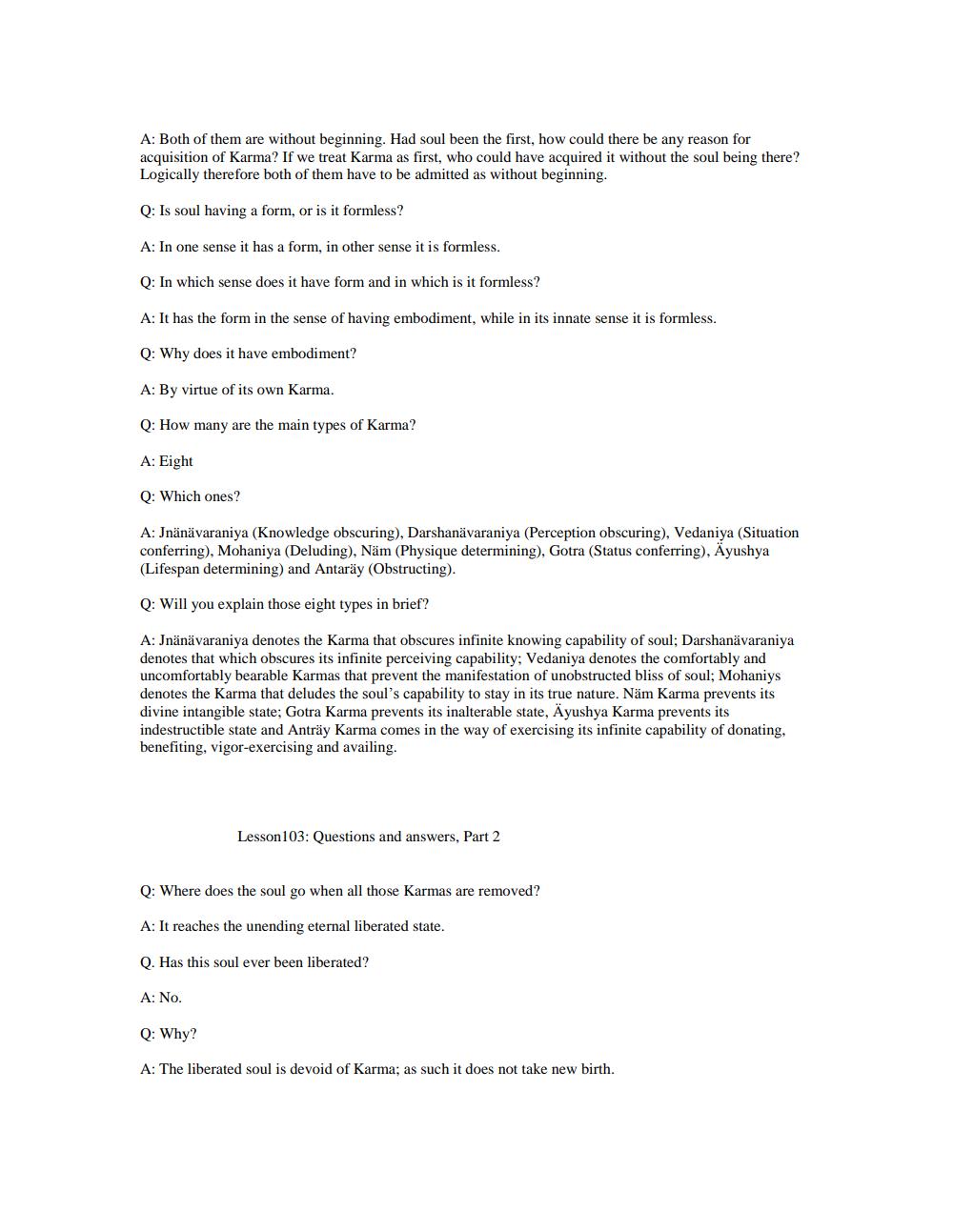________________
A: Both of them are without beginning. Had soul been the first, how could there be any reason for acquisition of Karma? If we treat Karma as first, who could have acquired it without the soul being there? Logically therefore both of them have to be admitted as without beginning.
Q: Is soul having a form, or is it formless?
A: In one sense it has a form, in other sense it is formless.
Q: In which sense does it have form and in which is it formless?
A: It has the form in the sense of having embodiment, while in its innate sense it is formless.
Q: Why does it have embodiment?
A: By virtue of its own Karma.
Q: How many are the main types of Karma?
A: Eight
Q: Which ones?
A: Jnänävaraniya (Knowledge obscuring), Darshanävaraniya (Perception obscuring), Vedaniya (Situation conferring), Mohaniya (Deluding), Näm (Physique determining), Gotra (Status conferring), Ayushya (Lifespan determining) and Antaräy (Obstructing).
Q: Will you explain those eight types in brief?
A: Jnänävaraniya denotes the Karma that obscures infinite knowing capability of soul; Darshanävaraniya denotes that which obscures its infinite perceiving capability; Vedaniya denotes the comfortably and uncomfortably bearable Karmas that prevent the manifestation of unobstructed bliss of soul; Mohaniys denotes the Karma that deludes the soul's capability to stay in its true nature. Näm Karma prevents its divine intangible state; Gotra Karma prevents its inalterable state, Ayushya Karma prevents its indestructible state and Anträy Karma comes in the way of exercising its infinite capability of donating, benefiting, vigor-exercising and availing.
Lesson 103: Questions and answers, Part 2
Q: Where does the soul go when all those Karmas are removed?
A: It reaches the unending eternal liberated state.
Q. Has this soul ever been liberated?
A: No.
Q: Why?
A: The liberated soul is devoid of Karma; as such it does not take new birth.




